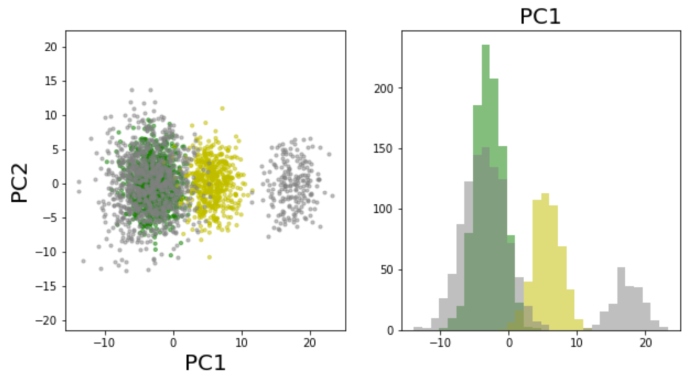Domain Adaptation Principal Component Analysis: base linear method for learning with out-of-distribution data
Domain adaptation is a popular paradigm in modern machine learning which aims at tackling the problem of divergence (or shift) between the labeled training and validation datasets (source domain) and a potentially large unlabeled dataset (target domain). The task is to embed both datasets red into a common space in which the source dataset is informative for training while the divergence between source and target is minimized. The most popular domain adaptation solutions are based on training neural networks that combine classification and adversarial learning modules, frequently making them both data-hungry and difficult to train. We present a method called Domain Adaptation Principal Component Analysis (DAPCA) that identifies a linear reduced data representation useful for solving the domain adaptation task. DAPCA algorithm introduces positive and negative weights between pairs of data points, and generalizes the supervised extension of principal component analysis. DAPCA is an iterative algorithm that solves a simple quadratic optimization problem at each iteration. The convergence of the algorithm is guaranteed, and the number of iterations is small in practice. We validate the suggested algorithm on previously proposed benchmarks for solving the domain adaptation task. We also show the benefit of using DAPCA in analyzing the single-cell omics datasets in biomedical applications. Overall, DAPCA can serve as a practical preprocessing step in many machine learning applications leading to reduced dataset representations, taking into account possible divergence between source and target domains.
PDF Abstract

 MNIST-M
MNIST-M